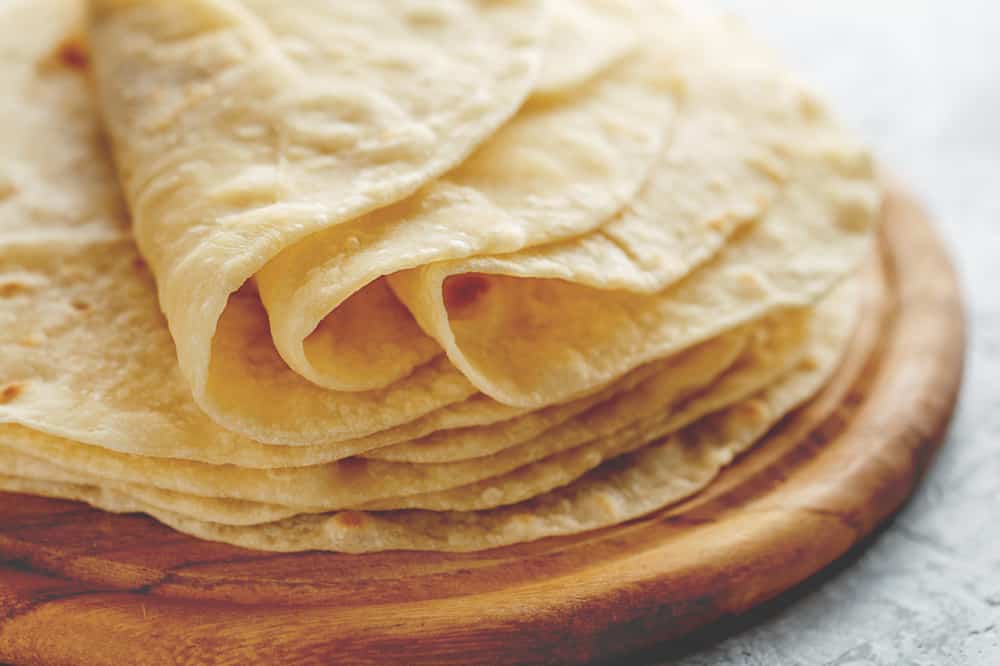
Made from wheat flour, tortillas have become an essential part of our dinner times but making tortillas is no less than an art. That’s because if you don’t pay attention, the tortillas become hard, and the taste becomes bland. For the most part, people purchase frozen tortillas, but some cooking enthusiasts love to experiment at home. In the latter cases, people end up asking, “why do my flour tortillas come out hard?” If your tortillas are coming out hard, we are sharing the reasons and some solutions!
Why Do My Flour Tortillas Come Out Hard?
1. Dough
The dough is the ultimate foundation of tortillas, and if you don’t get it right, the tortillas will come out hard. In the majority of cases, people over-knead the dough to get a smooth appearance, but it leads to hard tortillas. Make sure that your dough doesn’t have a hard and tough texture. So, follow the right timeline and don’t knead it much. On the other hand, if you are using an electronic dough mixer, knead it until the dough clings to the mixer’s hook.
2. Fats
When it comes down to making tortilla dough, it’s obvious that you have to create a mixture of water and flour, but fat is equally important. This is because if you don’t add sufficient fat to the dough, the tortillas will come out hard. In fact, when you are kneading the dough, make sure that it puffs up in the central part. In addition, make sure that you are accurately following the recipe.
3. Roll It Right
Rolling is one of the most important ways of ensuring the tortillas come out right. If you’ve been making tortillas for a long time, we are sure that you understand the difference in appearance and texture after the different types of rolling. That being said, you need to ensure that you are rolling the tortillas thin enough (not too thin either) to ensure the texture is right.
4. Heat
It wouldn’t be wrong to say that it’s the deal breaker or maker. Many people opt for slow heating to be on the safer side, but it often results in hard texture. On the other hand, excessively high settings will lead to burnt exteriors while the internal part will be undercooked. For this reason, you have to opt for medium settings and only flip the tortilla when it bubbles up. This way, you will be ensured that tortillas are properly cooked and have the right texture. In addition to this, make sure that you are heating the comal enough before putting raw tortillas on it.
5. Use Warmers
Once you have cooked the tortillas, leaving them in an open area will harden them up. For this reason, you need to opt for the tortilla warmers and put the cooked tortillas into the warmer. On the other hand, if you don’t have a tortilla warmer, you can also opt for the lint-free and dry cloth to ensure it’s safe from air, promising better texture.
6. Crisco
It’s common for people to use Crisco because it’s a reliable shortening, but it’s not the right choice for your tortillas, especially if you don’t want hard tortillas. On the other hand, you can opt for refrigerated lard while kneading the dough to ensure the tortillas are crispy yet soft. As we are talking about fats, let us tell you using liquid fat is not a good choice. This is because liquid fat will result in more hardening (they will come out soft but for only a few minutes).
7. Water Temperature
When you have to knead the dough, it’s obvious that you need to add water to the mixture. However, you cannot use cold water as it results in a harder texture. So, the right approach is using the almost boiling water because warm water isn’t good either. In simpler words, just heat water in the microwave for three minutes at the highest temperature.
8. Flour
How much flour you add to the dough will directly impact how the tortillas will come out. When you knead the dough, make sure it is not sticky upon touching, and if it has a sticky nature, add some specks of flour. However, don’t use too much dry flour because it hardens up the tortillas. So, try out these tips and enjoy perfectly crispy tortillas!